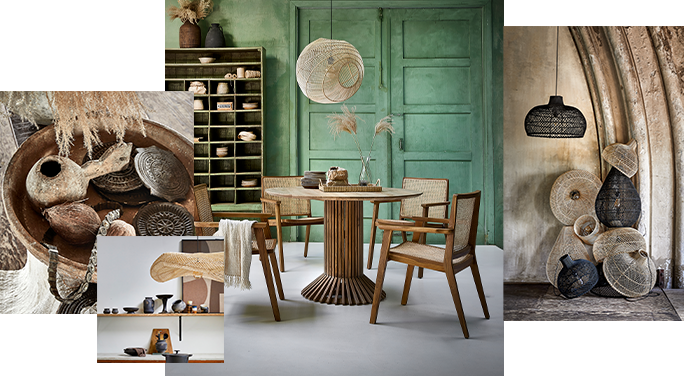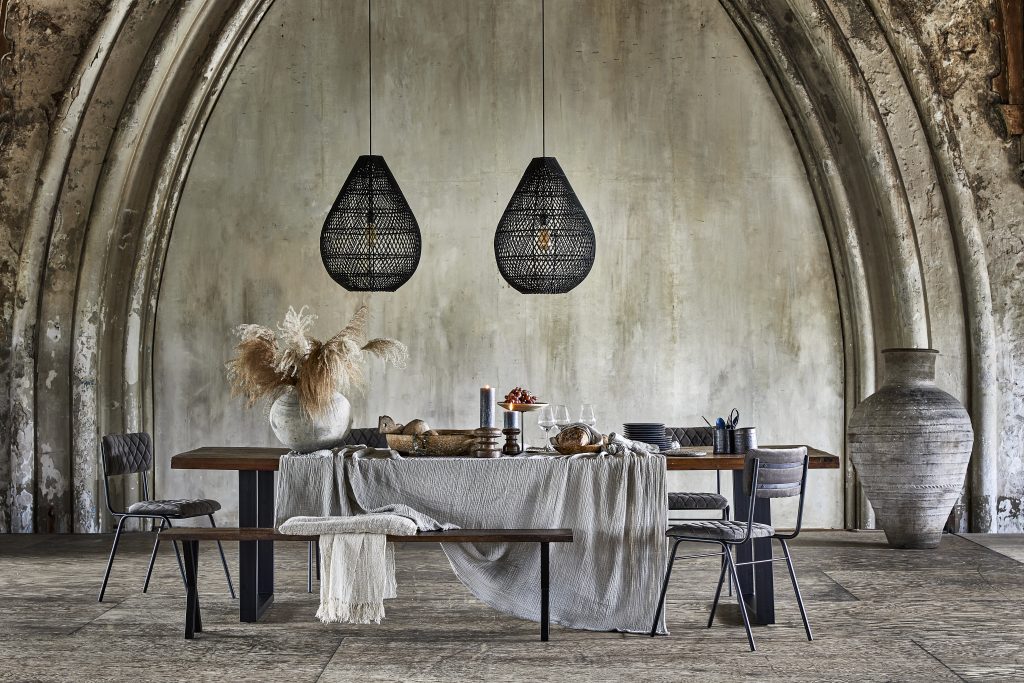
In this section, we’d like to share some ‘tips & tricks’ for your own business. Inspired by our CEO’s expertise in restoring wooden furniture. Find out about the essential guidelines for maintenance of your wooden table. Like, how to remove scratches and deep stains? Read on for the essential guidelines for maintenance of your wooden table.
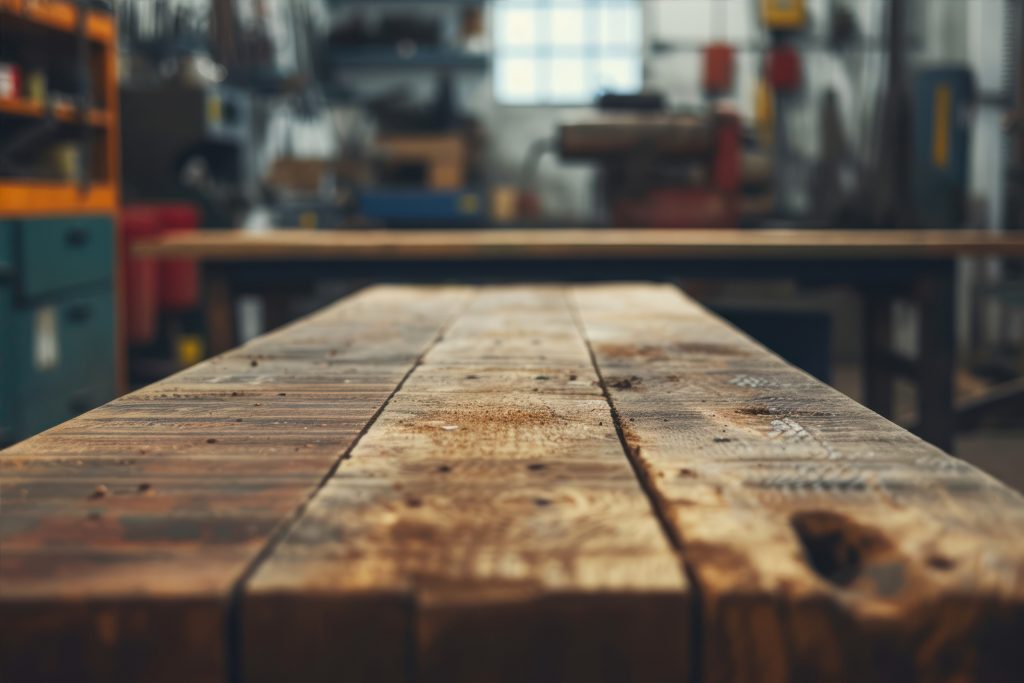
Solid wood
The most important thing to know is what kind of wood is the dining table made of. Is it a soft wood like pine or cedar, or a hardwood like teak or oak? You would also need to know whether the table is made from solid wood, a blend of materials, or veneer.
Solid wood means the tightly packed fibers make it structurally strong.
A bonus of solid wood is that in the end, the material is recyclable! Tables made with cheaper materials such as plywood, particleboard, and MDF do not have the same look or feel and damages are hard to repair.
However, it is a natural product and needs to be appropriately looked after and cared for to ensure that it stands the test of time and keeps its attractive appearance.
Prevention
Of course, prevention is the best form of protection.
- If you spill any food or drinks on the table, immediately wipe away to prevent staining.
- Use placemats and coasters as a barrier between hot plates, liquids, and the table’s surface. This way you can easily prevent heat marks and water rings.
- Cover your dining table with a tablecloth or table runner to add a layer of protection against scratches and spills.
- Position your dining table away from direct sunlight as prolonged exposure can cause discoloration & the wood can split or crack. (use a UV-resistant top finish).
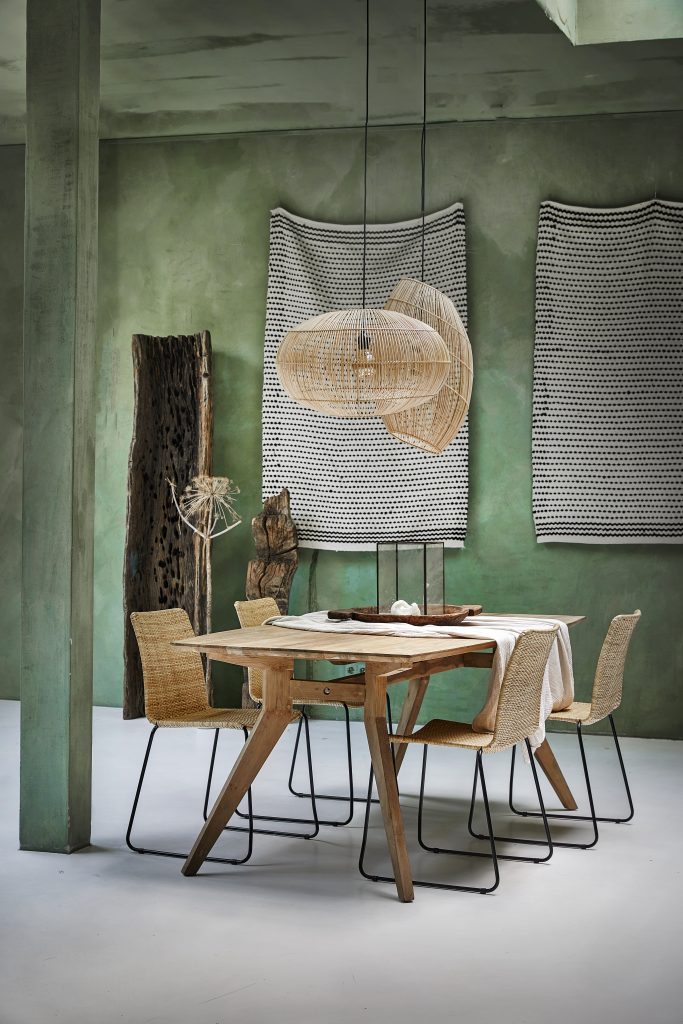
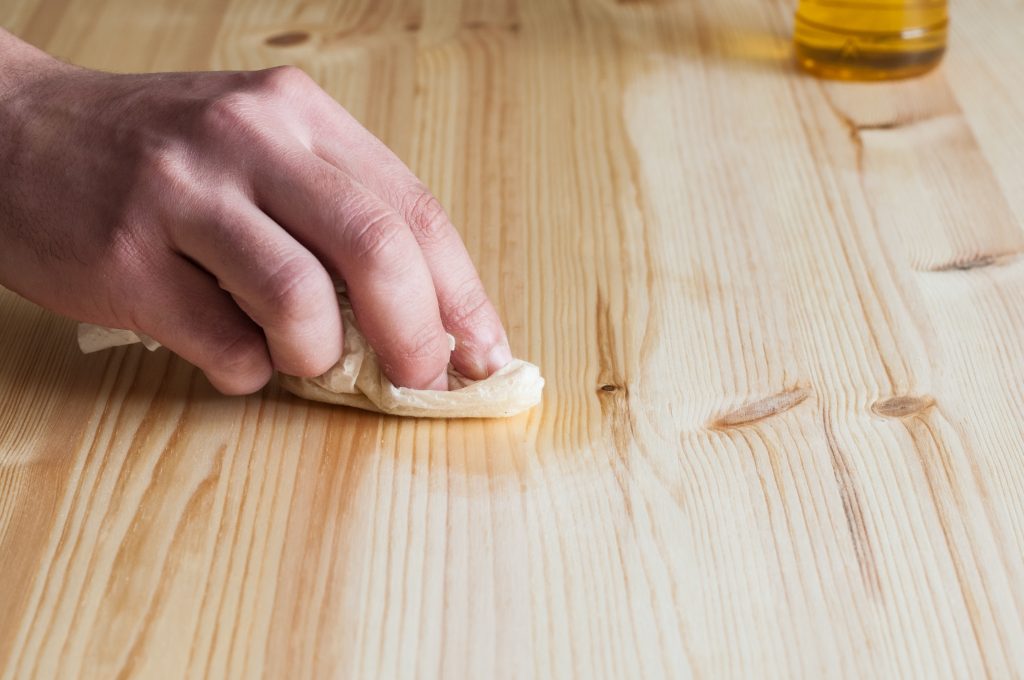
The finish
Any table requires regular maintenance, this is usually every 3-6 months depending on how often your table has been used.
Be careful when choosing off-the-shelf cleaning products as many of these products contain harsh chemicals and/or abrasives that will break down the top finish of your wooden dining table and could cause irreversible damage.
Cleaning the natural way
Fill a bowl with warm water and add a small amount of white vinegar, using around 1-3 tablespoons of white vinegar to one cup of warm water.
Use a soft, non-abrasive cloth, like micro-fiber. Do not use too much liquid, only a dampened cloth. Afterward, rinse the cloth, dip it in clean water, and go over it once more.
Take another dry cloth for any leftover moisture. It is now properly cleaned.

How to remove scratches?
Superficial scratches
Mix 100ml (one part) of white vinegar with 200ml (two parts) olive oil in a bowl or a cup and mix well. Dip a soft cotton rag into the cup so that the solution gets soaked into the rag. Squeeze the rag so that there is no excess moisture dripping off it.
Apply the soaked rag to your tabletop over the scratched area. Rub in a circular motion over the scratched area and then finish by rubbing the cloth with the grain.
Let the solution sit on the tabletop surface for 2 minutes. This allows the oil to soak into the scratches. Get a clean fresh rag and wipe off the excess solution. Then rub along the grain. Ensure there is no residue left on the tabletop. This process can be repeated several times until the scratches disappear.
Medium deep scratches
Use a crayon, once they’ve filled the small void or scratch on your table, they will become solid like the rest of the wood. Crayons come in a variety of colors which makes it relatively easy for you to find the perfect match.
- Select the crayon color that matches your dining table wood color.
- Rub the crayon over the scratched area both sideways and lengthways until the scratch is full of wax.
- Use a credit card to gently scrape any excess wax off the table. Ensure that the table surface is now level where the scratch used to be.
- Use a clean cotton rag to buff the wax infill – this will help blend the wax into the tabletop.
Deep scratches
- Use a specialized wood filler that matches the color of your table to fill in the deep scratch.
- Smoothen the surface and remove any excess wood filler from the table.
- Wait for the filler to dry.
- Use fine sandpaper (180 grit or 240 grit) on the dried area around the scratch. Always sand by following the direction of the wood’s grain.
- Apply appropriate oil or wax
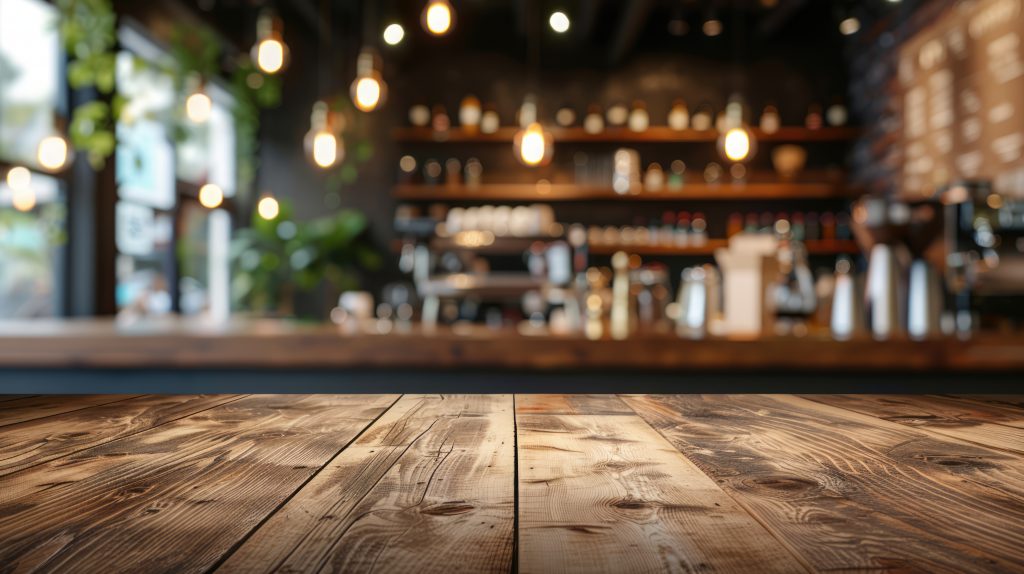
Remove water stains
Water stains are often in the form of white rings since the main culprit is the bottom of cold glasses or hot mugs being put directly on top of a wooden table. The white marks’ cloudy appearance is due to water being trapped on the table’s surface finish.
It’s important to note that if your watermark is not white but is a dark brown or black color, this means that the water has penetrated through your table finish and caused damage to the wood itself. This can usually be fixed by sanding the area down and re-applying a protective finish, although this depends on how deep the damage is into the wood.
If you have white cloudy watermarks on your table the best thing to do is try to remove the trapped water in the top finish. The easiest way to do this is to use a hairdryer or heat gun; the heat will evaporate the water helping it escape from the finish. Here are some simple steps to ensure you remove the stains safely without damaging your table further:
- Set your hairdryer to medium to high temperature.
- Hold it around 10cm away from your tabletop and move it side to side over the stained area. You shouldn’t smell any burning – if you do make sure you lower the heat or go further away from the tabletop.
- After 2-3 minutes you should start to see the stain start to fade.
- Keep it over the area for 15-20 minutes or until the stain has disappeared fully.
If the watermark has been on the table for a while it may not completely disappear. We advise that you now follow this step by applying a tablespoon of Mayonnaise to the area and covering it with a piece of kitchen towel overnight. This may seem odd, but mayonnaise contains a mixture of oil and vinegar. The oil will slowly seep into the wood overnight helping restore the table’s colouring, whilst the vinegar contains acetic acid which helps break down the surrounding finish allowing the restored area to blend in with the existing finish.
Overall, these little tips and tricks should help save your dining table from water stains.
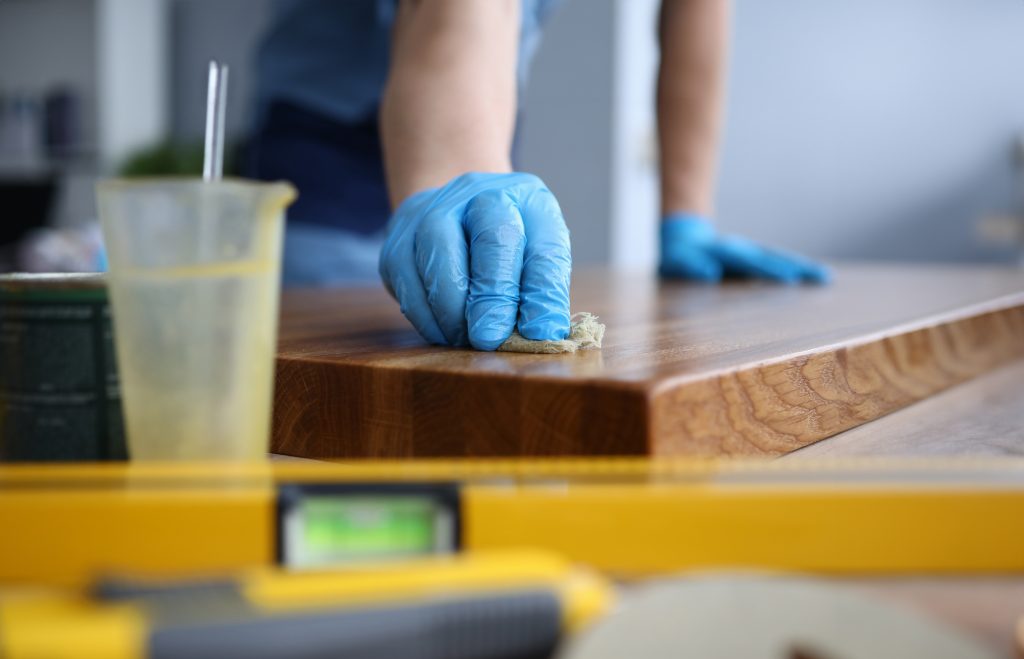
Protective coatings
Applying a protective coating to your dining table can prolong its lifespan. Wax, varnish, or polyurethane create a barrier that shields the wood from spills and scratches during use. Follow the manufacturer’s instructions and reapply the coating as needed. This typically only needs to be done every few years or so.
It really depends on what type of finish you are looking for.
Varnish
Varnishes are ultimately the most durable finish but if it becomes worn, scratched, chipped or damaged over time, there is little choice but to sand back to bare wood and re-varnish.
Hard Wax Oils
Still extremely tough and durable, very easy to apply, maintain, and importantly repair if areas become worn or scratched. Another key benefit of hard wax oils is that some come in a ‘natural’ formulation which are designed to better retain the untreated look of bare wood.
The application is simple, you spread the oil out on the table, let it soak for 5-10 minutes, then buff it off. The wood is dry to the touch after being buffed off and will achieve full hardness and protection from water within 7 days. Oils soak into the wood and are generally matte-satin in sheen, so re-finishing is much easier since you don’t have to remove everything down to bare wood to refinish. A light sanding and then a re-coat of the oil is all it takes to bring it back to its original beauty.
A recommended brand is “Osmo”.
Polyurethane
For an extremely durable finish, oil-based polyurethane creates a strong, impenetrable barrier and protects woods that would otherwise be vulnerable to dings or wear and tear. Make sure to apply it with patience, making sure to keep your individual layers thin. For polyurethane finishes, we typically recommend using 3 coats. The thick clear film created by these finishes can yellow or get cloudy with time.
This finish is great for a table that is likely to experience a lot of potential stains, and good for bars and restaurants. For outdoor use, get a polyurethane with UV protection.
Wax
Furniture wax, typically made from natural beeswax and carnauba wax is a traditional table finishing method that has been used for over 100 years. Applying a wax finish to your dining table helps to prolong its life and appearance.
Wax is generally easy to apply, gives almost foolproof results, and leaves the wood looking both rich and natural.
Furniture wax adds an additional layer of protection to your table. Once it has hardened it protects the layer under it from scratches.
Note that wax is soft and melts at low temperatures, so may not be as protective as other finishes.
Good brands are Renaissance wax, Briwax, and Osmo.
Oils
Wood oil is an ecological product made of natural resins and waxes, it extracts and emphasizes the individual characteristics of wood, absorbs into the wood, protecting it also deep inside, and copes well with high temperatures.
Different oils:
1: Tung Oil: Tung oil is a natural oil that is derived from the seeds of the Tung tree. It is a food-safe oil that is often used on dining tables because of its ability to provide a hard and durable finish that is resistant to water and stains.
2: Linseed Oil: Linseed oil is another natural oil that is derived from flax seeds. It is a food-safe oil that is often used on dining tables because of its ability to provide a hard and durable finish that is resistant to water and stains.
3: Danish Oil: Danish oil is a blend of natural oils, including Tung and Linseed oil. It is a food-safe oil that is often used on dining tables because of its ability to provide a hard and durable finish that is resistant to water and stains. It also gives a rich color to the wood.
4: Walnut Oil: Walnut oil is a natural oil that is derived from walnuts. It is a food-safe oil that is often used on dining tables because of its ability to provide a hard and durable finish that is resistant to water and stains. It also has a beautiful color and finish on the wood.
5: Teak Oil: Teak oil is a natural oil that is specially formulated for use on teak wood. It is a food-safe oil that is often used on dining tables because of its ability to provide a hard and durable finish that is resistant to water and stains. It also helps to retain the natural color of the teak wood.
Disclaimer:
- Always read the instructions carefully.
- Seek advice from a professional dealer.


